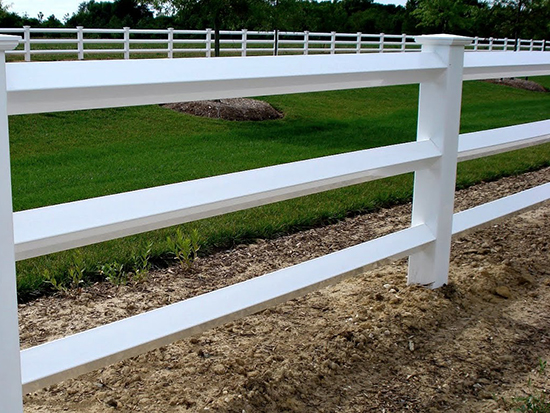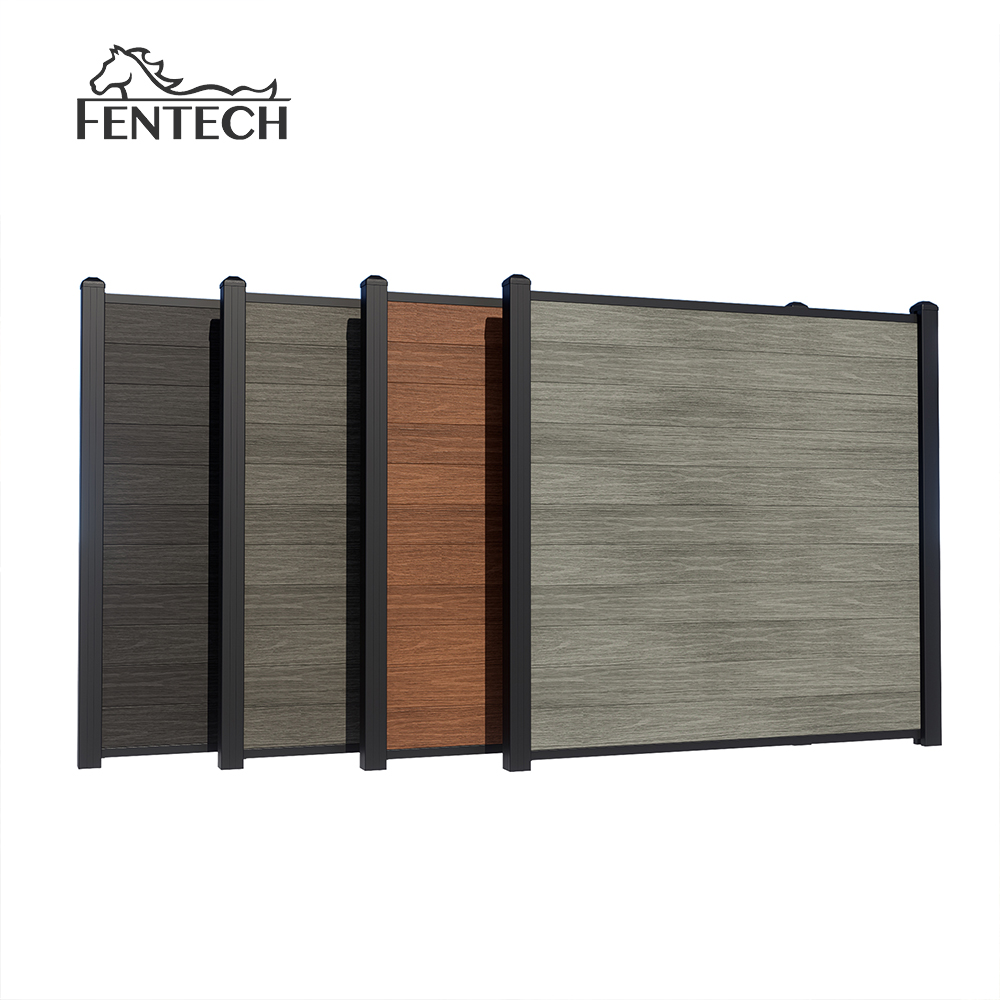We are professional China Custom Vinyl Fence Manufacturers with fences virgin PVC/Vinyl material and UV Protected.
When investing in fencing for your horses, durability, safety, and aesthetics are paramount. Among the various options available, vinyl fencing has surged in popularity, praised for its clean look and promise of being a low-maintenance alternative to traditional wood. However, a common and valid concern for many horse owners is the long-term performance of this material. The central question often asked is: Will a vinyl horse fence become brittle over time?
The short answer is: Yes, it can, but this is not an inevitable outcome. The process is slow and can be significantly mitigated through understanding the material, proper installation, and mindful maintenance. Unlike wood, which can rot and sag, vinyl’s primary aging mechanism is through environmental degradation, which can lead to a loss of plasticizers and, ultimately, increased brittleness.
This article will delve deep into the science behind vinyl fencing, the factors that contribute to brittleness, and the practical steps you can take to ensure your investment remains strong, safe, and beautiful for decades.
Understanding the Material: What is Vinyl Fencing?
To understand brittleness, we must first understand what vinyl fencing is made of. Vinyl fencing is primarily crafted from Polyvinyl Chloride (PVC), a synthetic plastic polymer. In its raw form, PVC is a hard and brittle material. To make it suitable for fencing—requiring flexibility, impact resistance, and durability—manufacturers add a suite of chemical additives. The most crucial among these for preventing brittleness are:
Plasticizers: These chemicals are intermingled with the PVC polymer chains to increase flexibility, workability, and durability. They are the key component that prevents the fence from being rigid and brittle from the start.
Impact Modifiers: These additives enhance the material’s resistance to cracking and chipping upon impact—a vital feature for containing powerful animals like horses.
Stabilizers (including UV Inhibitors): These are the most critical additives for long-term outdoor performance. They absorb and reflect ultraviolet radiation from the sun, protecting the polymer chains from breaking down.
Pigments: The color in vinyl fencing is not a surface paint; it is solid throughout the material. The pigments themselves, particularly titanium dioxide (used for white and light colors), also play a role in UV protection.
The quality and concentration of these additives are what separate a premium vinyl horse fence from a inferior one that may become brittle vinyl rail quickly.
The Primary Culprit: What Causes Vinyl Fencing to Become Brittle?
Several environmental and physical factors work in concert to slowly degrade the integrity of vinyl over time.
Ultraviolet (UV) Radiation: The Biggest Threat
The sun’s UV rays are the single greatest enemy of vinyl fencing. Prolonged and continuous exposure causes a process called photo-degradation. UV radiation has enough energy to break the chemical bonds in the PVC polymer chain and, crucially, break down the plasticizers.
The Process: As the plasticizers leach out and evaporate over years of sun exposure, the fence gradually loses its flexibility. The material becomes harder and less able to absorb energy. This is the fundamental process that leads to a brittle PVC fence. A high-quality fence will have substantial UV inhibitors to dramatically slow this process.
Extreme Temperature Fluctuations
Vinyl expands and contracts with changes in temperature. In regions with extreme seasons, the constant cycle of expansion (in summer heat) and contraction (in winter cold) puts repeated stress on the material. When vinyl is in a cold, contracted state, it is naturally more prone to cracking upon impact than when it is warm and flexible. This is why a brittle horse fence is more likely to crack if struck by a horse or equipment during a freezing winter day.
Impact and Physical Stress
While designed to be strong, any material has its limits. A direct, powerful kick from a horse, being struck by farm equipment, or having a heavy tree branch fall on it can cause cracking, especially as the fence ages and weathers. The impact resistance of a new, flexible rail is far superior to that of an older, more brittle one.
Improper Installation
Installation is often an overlooked factor in the long-term health of a vinyl fence. If posts are set too far apart, the rails will have inadequate support and will be more susceptible to sagging and snapping under pressure or from temperature-related expansion and contraction. Using the wrong fasteners or overtightening them can also create stress points that are prone to cracking.
Low-Quality Material
Not all vinyl fencing is created equal. Lower-quality, thinner vinyl mixes will have a lower concentration of the crucial stabilizers, UV inhibitors, and impact modifiers. This inferior vinyl rail material will degrade, fade, and become brittle much faster than a premium, thick, virgin-vinyl product.

Prevention is Key: How to Slow Down and Prevent Brittleness
The good news is that you are not powerless against these forces. Proactive choices and simple maintenance can add decades to the life of your fence.
Choose a High-Quality Fence from the Start (The Most Important Step)
Your battle against brittleness is won at the point of purchase. Invest in a fence specifically rated for agricultural and equine use.
Thickness Matters: Look at the wall thickness, especially of the rails. A thicker wall (often measured in “mils” or inches) contains more material and additives, providing a greater buffer against degradation.
Virgin Vinyl vs. Recycled: While recycled content can be eco-friendly, fences made from 100% virgin vinyl typically have a more consistent and robust additive package, leading to better long-term performance and color retention.
UV Protection: Inquire about the UV stabilizer package. Reputable manufacturers will use high-quality, co-extruded UV inhibitors that are integral to the product, not just a surface coating.
Ensure Professional, Code-Compliant Installation
Follow the manufacturer’s guidelines for post spacing meticulously. For horse fencing, posts are typically set 8 to 10 feet apart for maximum rail support. Ensure posts are set deep enough in concrete to prevent heaving and movement, which transfers stress to the rails. Use manufacturer-recommended fasteners and avoid creating micro-cracks during installation.
Strategic Location and Planning
If possible, plan your paddock layout to utilize natural windbreaks and shade from trees. This isn’t always feasible, but even partial shading during the hottest parts of the day can reduce the cumulative UV exposure and thermal cycling on the fence.
Regular Cleaning and Maintenance
Contrary to the “no-maintenance” myth, a small amount of care goes a long way.
Cleaning: Regularly wash your fence with a mild soap and water solution using a soft brush or cloth. This removes dirt, organic matter, and grime that can trap moisture and, in some cases, accelerate degradation.
Inspections: At least twice a year, conduct a thorough walk-around of your fencing. Look for hairline cracks, especially near posts and fasteners, signs of impact, or any loose components. Catching a small crack early can prevent a full rail break later.
Immediate Repairs: If you find a cracked rail or post, replace it immediately. A compromised section creates a weak point that can lead to further failure and, most importantly, a potential safety hazard for your horses.
Addressing Scratches and Surface Damage
While deep cracks often require replacement, surface scratches can be remedied. Light sanding with very fine-grit sandpaper can smooth out rough edges and minor scratches, preventing them from becoming stress concentrators that could develop into deeper cracks.
Vinyl vs. Other Common Horse Fencing Materials
To fully understand vinyl’s place, it’s helpful to compare its aging process to other popular options.
Wood Fencing: The traditional choice. Wood is susceptible to rotting, insect damage, splintering, and requires constant maintenance like painting, staining, and sealing. While it may not become “brittle” in the same way, it can become weak and structurally unsound. Its failure mode is often gradual sagging and breaking.
Electric Tape/Rope: Highly flexible and effective for containing horses through psychological means. However, it can sag, requires constant checking of voltage, and can be damaged by weather and chewing. It doesn’t become brittle but can degrade and break.
Coated Wire: Can be a cost-effective option but poses a significant entanglement risk for horses. The coating can crack and peel over time, exposing sharp, rusty wire, making it a poor choice for primary containment.
Vinyl’s value proposition is its structural strength and extremely low maintenance compared to wood. While it has a potential brittleness factor, this is a slow process measured in decades, not years, for a quality product.
The Lifespan Expectancy: How Long Before Brittleness Sets In?
A common question is about the vinyl fence lifespan. A cheap, poorly made vinyl fence might show significant signs of brittleness and color fading in as little as 5-10 years. However, a high-quality vinyl horse fence, properly installed and minimally maintained, is typically warranted for 20 to 30 years by reputable manufacturers. In practice, many such fences last even longer, often remaining functional and safe for 30+ years before brittleness becomes a significant concern that necessitates replacement.
The key takeaway is that the longevity of PVC fencing is directly proportional to its initial quality.
Conclusion: A Durable, Long-Lasting Investment with Proper Care
So, will your vinyl horse fence become brittle over time? The potential exists, as it does with any material exposed to the elements. However, brittleness is not a design flaw but a known characteristic of aging plastic that can be effectively managed.
By making an informed investment in a high-quality, thick, UV-protected product, ensuring it is installed correctly, and performing simple periodic maintenance, you can dramatically slow the degradation process. Your vinyl fence will reward you with decades of safe containment, aesthetic appeal, and freedom from the constant upkeep demanded by other materials.
The goal is not to find a fence that lasts forever, but one that offers the best combination of safety, beauty, and practicality over the long term. For countless horse owners, a well-chosen vinyl fence continues to be an excellent solution that meets all these criteria, standing strong and resilient against the tests of time and weather.
 English
English  中文简体
中文简体
























